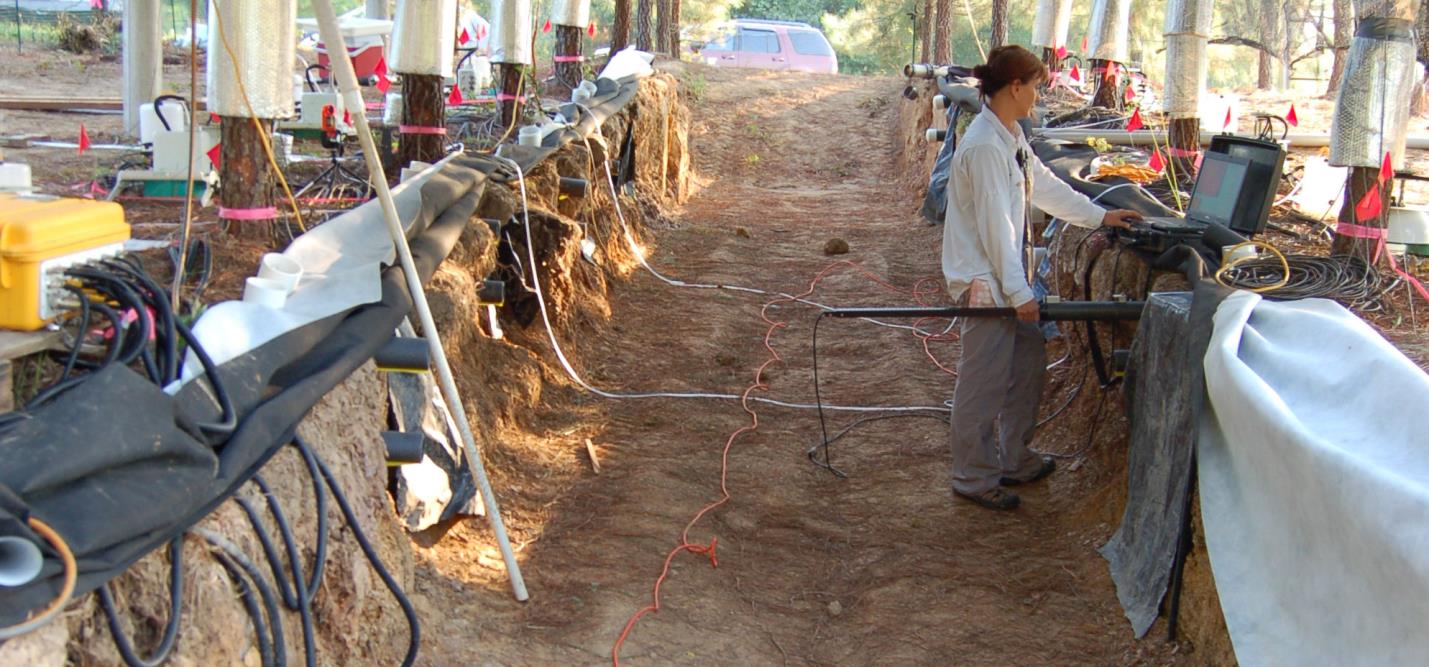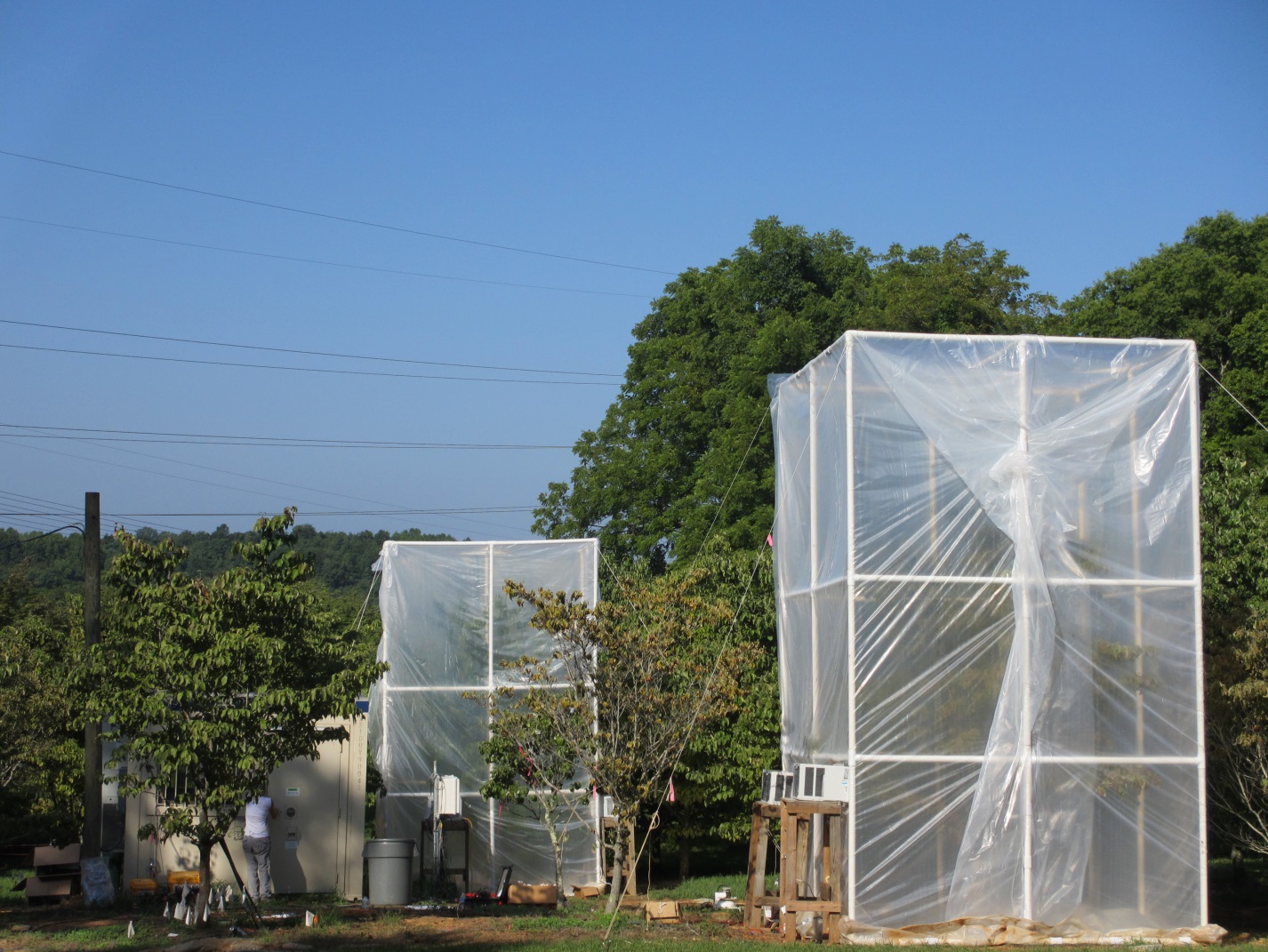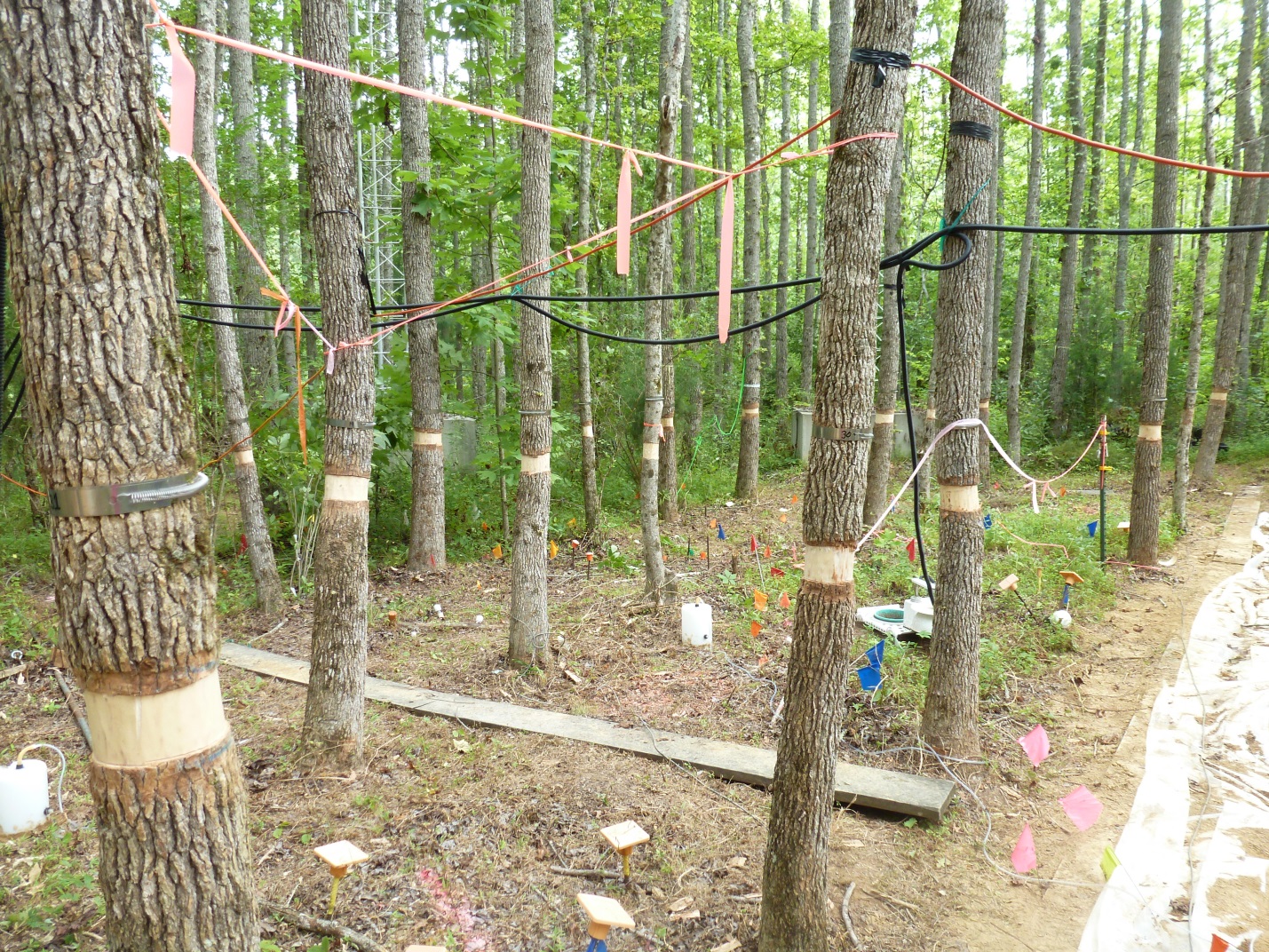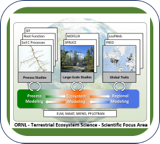The PiTS task was established with the objective of improving the C partitioning routines in existing ecosystem models by exploring mechanistic model representations of partitioning tested against field observations. We used short-term field manipulations of C flow, through 13CO2 labeling, canopy shading and stem girdling, to dramatically alter C partitioning, and resultant data are being used to test model representation of C partitioning processes in the Community Land Model (CLM4 or CLM4.5).
PiTS-1 measured root growth of a loblolly pine stand following 13CO2 pulse-labeling.

PiTS-1 used 13CO2 pulse-labeling and shading of a loblolly pine stand to track C through the plant-soil system. A suite of concurrent measurements were conducted to inform the model, including meteorological data, photosynthesis, soil and plant water dynamics, root and stem growth and soil CO2 efflux. Modeling efforts indicate that CLM4 performed well simulating standing biomass and C assimilation, but provided poor estimates of soil water extraction and sap flux. Internal C dynamics were noticeably missing in the model which lacks an explicit C storage component, and thus the 13C pulse was instantly sent to sinks, revealing the lack of adequate representation of C flow and storage.
PiTS-2 used 13CO2 pulse-labeling and shading of dogwood trees

PiTS-2 used 13CO2 pulse-labeling and shading of dogwood trees, building upon lessons learned from the pine study; i.e., need for greater separation of treatments, seasonal patterns, separation of autotrophic and heterotrophic soil CO2 efflux, and modeling need for more detailed physiological and environmental measurements. Initial results indicate strong seasonal dependence of C partitioning to the various components, including new leaves and fruits, as well as a substantial and rapid transfer of new C belowground to arbuscular mycorrhizal fungi.
PiTS-3 used stem girdling to assess soil and root carbon dynamics.

PiTS-3 leveraged the residual 13C:12C signal at the former free air CO2 enrichment study (ORNL FACE) and used stem girdling to assess soil and root carbon dynamics. Fine root soluble sugars were maintained in girdled trees at the expense of older root C storage pools.
Results
A manuscript and a data set from PiTS-1 have been published (Warren et al., 2012 and Warren et al., 2013), and data analysis continues for PiTS-2 and -3. Results provide insights of mechanistic processes not well-refined in the models and will lead to improvements in model representation of C partitioning processes. Modeling is ongoing and will be used to explore new C partitioning schemes in CLM, and determine the types of future focused studies required to test models.
Publications and Data Sets:
Warren, JM, CM Iversen, CT Garten Jr., RJ Norby, J. Childs, D. Brice, RM Evans, L. Gu, P. Thornton, DJ Weston. 2012. Timing and magnitude of C partitioning through a young loblolly pine (Pinus taeda L.) stand using 13C labeling and shade treatments. Tree Physiology 32:799-813.
Warren, J.M., C.M. Iversen, C.T. Garten, Jr, R.J. Norby, J. Childs, D. Brice, R.M. Evans, L. Gu, P. Thornton, and D.J. Weston. 2013. PiTS-1: Carbon partitioning in loblolly pine after 13C labeling and shade treatments. Carbon Dioxide Information Analysis Center, Oak Ridge National Laboratory, U.S. Department of Energy, Oak Ridge, Tennessee, U.S.A. Data set: http://dx.doi.org/10.3334/CDIAC/ornlsfa.001
Mao, Jiafu et al. 2014. Simulation of the Community Land Model in a pine stand with 13CO2 and shading manipulations (under review)

